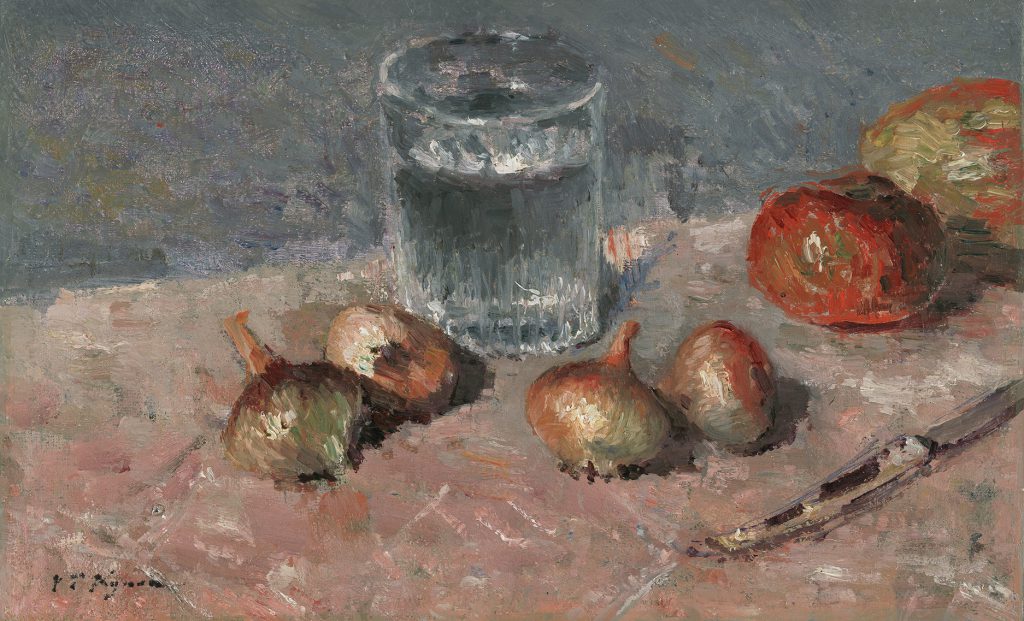Still included in the School of Barbizon by some art historians, Victor Paul Vignon lived and painted the best part of his life on the shores of the Seine and Oise rivers in the region of Ile-de-France, a popular spot for the Impressionist painters. He was known for his relatively small paintings, mainly of the surrounding landscapes, and by a few but great still-life painting, as the present one, in the 1880’s. In a way, the present work has nothing to do with the Barbizon style anymore or any influence of Corot, but it is fully in an impressionist line, with much delicacy and a kind of a charming vibration and fuzziness.
He started his painting career as a pupil of Adolphe Cals, but moreover as a pupil of Jean-Baptiste Corot in 1869. A year later, he discovered the Oise Valley and befriended Pissarro. Under the influence of the later, his style slowly changed towards a more modern look. He counted many Impressionist artists among his friends, such as Caillebotte, Monet, Degas, Sisley and Renoir and Van Gogh. Between 1880 and 1886, he participated alongside them at Salon des Indépendants, and four times at the exhibitions of the impressionist painters, notably at the most important one in 1882.
Criticised for not being truly impressionist, he never gained the same reception or fame as his friends, but his work was and is still very well appreciated by collectors. His works can be found in many public collections, as the Musée d’Orsay, Kunsthalle Bremen, Ny Carlsberg Glyptotek in Copenhagen, Musée Faure in Aix-Les-Bains, Centraal Museum in Utrecht, and Singer Museum in Laren in The Netherlands.






